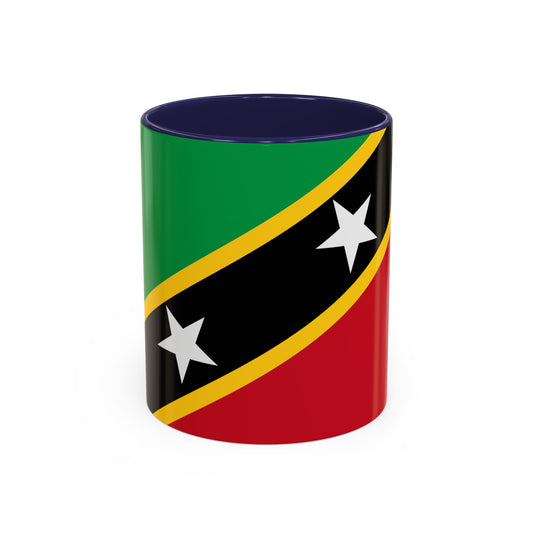-
Saint Kitts and Nevis Sweatshirt
Regular price $34.15 USDRegular priceUnit price / per -
Saint Kitts and Nevis Flag Sweatshirt
Regular price $34.15 USDRegular priceUnit price / per -
Saint Kitts and Nevis Pillow
Regular price $22.65 USDRegular priceUnit price / per -
Saint Kitts and Nevis Backpack
Regular price $59.79 USDRegular priceUnit price / per -
Saint Kitts and Nevis Leather Patch Hat
Regular price $18.85 USDRegular priceUnit price / per -
Saint Kitts and Nevis Mug
Regular price $11.65 USDRegular priceUnit price / per -
Saint Kitts and Nevis Trucker Cap
Regular price $14.90 USDRegular priceUnit price / per -
Saint Kitts and Nevis Hoodies
Regular price $34.40 USDRegular priceUnit price / per -
Saint Kitts and Nevis T-shirts
Regular price $22.79 USDRegular priceUnit price / per -
Saint Kitts and Nevis Flag Hoodies
Regular price $34.40 USDRegular priceUnit price / per -
Saint Kitts and Nevis Flag on T-shirt
Regular price $22.79 USDRegular priceUnit price / per
Collection: Saint Kitts and Nevis
The Saint Kitts and Nevis flag, also known as the flag of Saint Kitts and Nevis, is a symbol of pride and identity for the people of this Caribbean nation. We will look into the flag's history, symbolism, and current relevance, shedding light on its journey from adoption to its significance today.
Overview of the Flag's Design and Colors

The Saint Kitts and Nevis flag showcases a striking design characterized by a unique diagonal division that slices the flag into green and red halves. The top green segment is a tribute to the lush, verdant landscapes that define much of the islands' topography, symbolizing the nation's natural beauty and agricultural richness. Conversely, the lower red portion echoes the resilience and strength of the people of Saint Kitts and Nevis, acknowledging the challenges and struggles they faced throughout their history.
A bold black band cuts across at the heart of the flag, housing two bright white stars. This black band is a nod to the African descent of many islanders, paying homage to their heritage and the profound impact it has had on the nation's cultural and societal fabric. The stars within the black band sparkle with the promise of hope and liberty, guiding lights toward a prosperous and free future for all Kittitians and Nevisians. This thoughtful amalgamation of colors and symbols encapsulates the essence of Saint Kitts and Nevis, presenting a visual narrative of the nation’s past, present, and aspirational future.
Historical Context of the Flag
The journey to the current Saint Kitts and Nevis flag began with the nation's declaration of independence from Britain on September 19, 1983. This date marks the country's emergence as a sovereign state and the day the flag was officially hoisted, symbolizing a new era of autonomy and unity for the island nation. Unlike many countries whose flags have undergone several revisions over the years, the flag of Saint Kitts and Nevis has remained constant since its initial adoption. Its introduction was pivotal, representing both a break from colonial rule and the forging of a distinct national identity. The decision to maintain the original design without alterations underscores its enduring significance and the deep connection it fosters among the citizens of Saint Kitts and Nevis. This unaltered symbol of independence speaks volumes about the nation's steadfast values and the pride of its people in their heritage and shared aspirations.
Symbolism Behind the Flag

The flag of Saint Kitts and Nevis is rich in symbolism, each element carefully chosen to reflect the nation's identity and aspirations. The green upper triangle signifies the fertility of the islands, a nod to the bountiful agriculture and lush landscapes that are a hallmark of the nation. This color emphasizes the importance of the natural environment and the country's commitment to preserving it. The red lower triangle represents the struggle for freedom and the bloodshed in the fight against colonial oppression, a tribute to the resilience and bravery of the people.
The central black band, with its bold presence across the flag, stands for Africans' cultural and historical influence in the nation's development. This inclusion highlights the significance of African heritage in shaping Saint Kitts and Nevis's societal and cultural fabric. Within this band, the two white stars are symbols of hope and liberty. They also represent Saint Kitts and Nevis, two islands united under one national identity, shining brightly with the promise of equality and justice for all its citizens. Together, these elements weave a narrative of a nation that values its past, cherishes its natural beauty, stands resilient in the face of adversity, and looks forward to a future filled with hope and freedom.
Current Relevance of the Flag
Today, the Saint Kitts and Nevis flag continues to hold a central place in the hearts and lives of its citizens, symbolizing unity, independence, and national pride. It is a common sight at various significant events, from Independence Day celebrations and cultural festivals to sporting competitions, where it is displayed with honor by athletes representing the country. The flag also plays a crucial role in military ceremonies, where it is revered as a symbol of the nation's sovereignty and the sacrifices made for freedom. Despite its widespread acceptance and respect, the flag occasionally becomes the focus of discussion, particularly regarding its symbols and what they represent in the context of contemporary societal values. These conversations reflect the dynamic nature of national identity and the ongoing journey of the nation toward reflecting the aspirations and diversity of all its people. As such, the flag remains not only a symbol of where Saint Kitts and Nevis has come from but also a beacon for where it aims to go, embodying the evolving spirit and unity of the nation.
Additional Facts and Flag Protocols
In adhering to the dignified treatment of their national symbol, the people of Saint Kitts and Nevis follow detailed protocols when displaying the flag. It is a mark of respect to hoist the flag at the break of dawn and ensure its lowering coincides with the setting sun. This daily ritual underscores the reverence held for this emblem of national pride. A cardinal rule in flag etiquette is to prevent the flag from making contact with the ground, symbolizing the upholding of the nation's honor and integrity. Additionally, displaying the flag in an inverted position is strictly avoided, as it could signify distress or disrespect in international flag protocol. An intriguing piece of trivia about this flag is its conception by Edrice Lewis, whose artistic vision gave birth to a symbol deeply reflective of the nation's identity and aspirations. This local origin of the flag design further cements its significance as a true representation of Saint Kitts and Nevis' cultural heritage and pride.






















